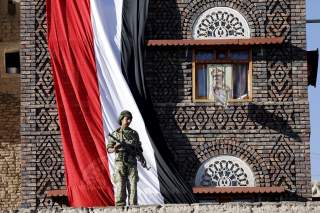Oman's Balancing Act in Regional Politics May Not Last
Saudi Arabia and the United Arab Emirates are becoming more entrenched in Yemen. What does this mean for the Sultanate of Oman?
Adding to the present tensions between Saudi Arabia/UAE and Oman, locals fear that both border crossings could be closed in order to exacerbate tensions with Oman as part of a larger scheme to force Muscat to submit to Riyadh and Abu Dhabi’s regional agendas.
Salafist Extremists
Tensions between Riyadh and the Houthis can be partially explained by a contentious relationship between the two neighbors that stretches back to the 1960s, when Riyadh began granting generous subsidies to various Yemeni factions—ranging from tribal sheikhs to clerics and political leaders. The tribes residing along the Yemen-Saudi border benefited in particular as Riyadh sought to influence Yemeni affairs by supporting a number of Wahhabi educational institutions throughout the county. Over time, the Saudi influence increased and its Wahhabi institutions grew stronger.
Saudi Arabia has evacuated Salafists from Yemen’s Saada Governorate—which is the heartland of the Houthis—to Mahra. Just as the Salafist presence in Saada was threatening to the Houthis and their way of life—and a tool for Riyadh to exert its influence while spreading Wahhabism by setting up a Salafist institute in the city of Dammaj—so too is it threatening to Mahra and its local population.
After locals protested against reestablishing the Dammaj institute in Mahra, the Saudi coalition commander reached an agreement in April 2017 to disperse the estimated one thousand Salafists—many of whom are Saudi, French and Nigerian citizens—throughout Mahra’s nine districts and to prevent them from opening up their institute. The Salafists, however, now control an estimated third of Mahra’s 314 mosques from where they propagate their ideology.
The Salafist presence in Mahra is also a threat to Oman’s Dhofar Governorate, a conservative Sunni stronghold as the locals fear that their ideology could influence the younger generation.
All of the underlying dynamics have brought Mahra to a boiling point, with a local official warning me that the protests, which had until now been peaceful, could turn violent.
Socatra and the Strategic Encirclement of Oman
In April 2018, UAE Special Forces seized control over sea and airports on Yemen's remote island of Socotra. Abu Dhabi’s decision to exert control over Socotra is not only about facilitating its access to East Africa—as the island is situated off the coast of Somaliland where the UAE has invested heavily in the commercial port of Berbera—but about destabilizing Oman through an Emirati strategic encirclement of the Sultanate.
In making clear that the UAE intends to establish a long-term presence in Yemen, MbZ appears to see Yemen as a critical part of his strategy to establish greater Emirati influence in the larger Red Sea arena that stretches into the Horn of Africa. UAE domination of eastern and southern Yemen along with the Yemeni ports at Mukalla, Aden, Mocha, and, potentially, Hodeidah would ensure that the UAE can establish and maintain a command presence in crucial shipping lanes through the Arabian and Red Seas. The present power play against Oman—triggered by the UAE’s espionage attempts and the Saudi military presence on the Yemen-Oman border—suggest that the UAE’s strategic objective is to squeeze Oman or perhaps even turn it into a vessel state as part of its quest to dominate the broader Arabian Peninsula and East African region. That this is occurring as the sultanate is prepares for the post-Qaboos era will only heighten the stakes and tensions between the involved Arab parties. This, in turn, could trigger hostilities between the UAE-Saudi bloc and Oman.
Sigurd Neubauer is a Middle East analyst based in Washington.
Image: Reuters

